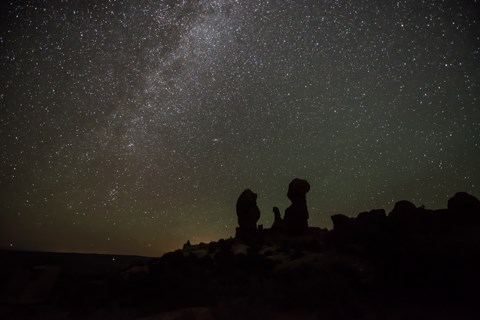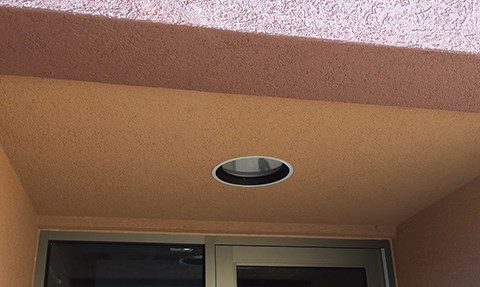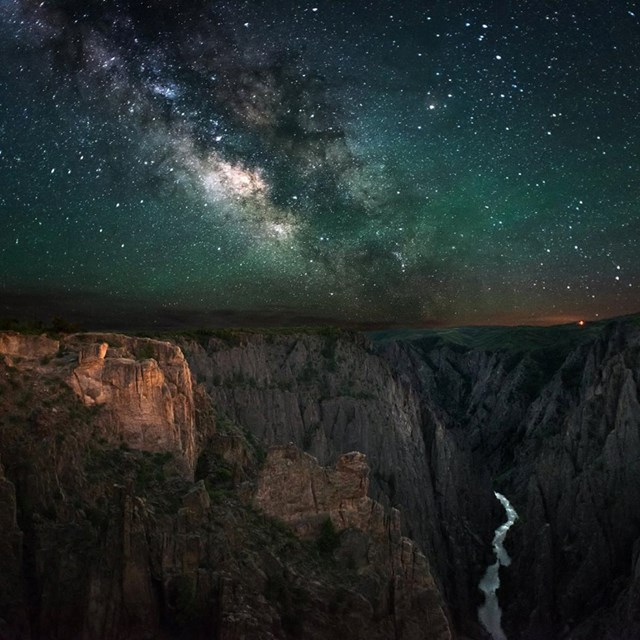
NPS Photo For thousands of years, observing the night sky has been fundamental to human life and survival. The sky was a major symbol in the natural world of order and cyclic repetition. Studying the skies brought a sense of normalcy to people’s lives. Movement of the planets and stars helped farmers determine when to plant and harvest crops and guided ritual and religious observances. Interpretations of the celestial bodies varied widely among cultures, but often the sky was considered the abode of gods, a place humans could never touch. How do we know that sky watching was important to people of the past? Folk stories, myths, elaborate rituals and festivals, dance and costumes, and complex and symbolic architecture survive today. Today we sometimes take the vast wealth of information on the night sky for granted or are amazed by the accomplishments of ancient astronomers. Our complacency results from our own night blindness, a symptom caused by our brightly lit and building-enclosed world. Even though we no longer need to track celestial events for our daily survival, we still enjoy gazing at the sky’s majestic beauty. Yet this simple pleasure is denied to 90 percent of the world’s population. Not only is light pollution an aesthetic problem but it also affects our sense of perspective. Most of the world’s population can no longer ponder Earth’s place in the universe because light pollution of the night sky shrinks the visible universe down from millions of light years to a few miles. One of our most ancient and universal cultural values is threatened and may become extinct. 
NPS/Chris Wonderly Yet light pollution from nearby towns has become evident even here in the last few years. As these towns grow, so grows the amount of light that encroaches on the dark skies of Arches. Advertising and display lighting, building illumination, upward floodlighting and domestic and industrial security lights vanquish the dark into shadowy corners. How do we protect the beauty of our night skies? Should we turn off street lamps and exterior building lights in favor of dark skies and forego private and public safety and security? Does this starry wilderness deserve the same protection afforded to other resources of this national park? To date there is no federal legislation mandating preservation of the night sky. What is the solution? Do we need another federal regulation? Fortunately, with some modifications of lighting sources and forethought about the placement of lighting, the needs of safety and security and dark skies can all be accommodated. Light pollution is mostly the product of public lighting that goes to waste. In the United States alone, billions of dollars a year in energy costs could be saved by replacing high wattage, unshielded street lamps and exterior lights with well-directed, lower wattage, shielded lights. Shields would allow the same amount of light to be delivered to the ground where it is needed for safety and security. Additionally, less carbon dioxide and other pollutants would be introduced into the atmosphere because power plants would be producing less energy for lighting. 
NPS/Nathan Ament Because of the quality dark skies in our area, we have worked to protect and share our dark night skies. While Arches is a relatively large park, its amenities are limited. It contains a small visitor center and administrative area near the park entrance along US 191, and one campground at Devils Garden. Beyond these limited visitor and employee areas, the park is unlit by artificial lighting. Trailheads remain dark and fulfill the visitor expectation for a wilderness experience. Arches is dedicated to maintaining a lighting system that is low-impact, and exists only as necessary for safety. Nearly 100 percent of Arches' lighting fixtures are night-sky friendly. Thanks to these lighting efforts and public night sky education, Arches National Park was certified as an international dark sky park in 2019. We believe that preserving the natural night sky is an integral part of the resource protection done at Arches, and we're committed to the ongoing conservation of this important cultural, natural, and scientific resource. Night-sky watching in Arches remains a democratic joy, available to all and open every night from dusk to dawn. More
Visit our keyboard shortcuts docs for details
Learn about light pollution in our National Parks. ArticlesMore from other national parks |
Last updated: May 15, 2025


